Buyer’s guide Baby Triumphs
Triumph’s 1300 was a brave venture. It lacked the character and DiY-friendliness of the Herald, but the company’s first front-wheel-drive model – and first small monocoque – was well engineered, with semitrailing arm rear suspension and a comfortable, quality feel that received rave reviews on test. Front drive was the obvious way to go after the success of the Mini, and the arrival of the BMC 1100 confirmed its packaging advantages. But Triumph, then part of Leyland but not yet joined up with BMC, wasn’t going to follow blindly.
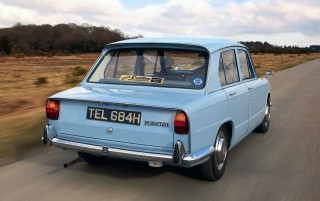
Instead, Harry Webster placed the Herald motor in-line – with the gearbox below and partly behind – and the final drive immediately under the sump. It meant a fairly high bonnet, but could use the engine unchanged bar crank and sump. To get good performance in what was a heavyish bodyshell for its class, the 1147 unit was taken out to 1296cc and fitted with an eight-port head, based on that developed for the Le Mans Spitfires. The 1296cc engine would soon be used in the Spitfire, too, and would eventually give the Herald a new lease of life as well, as development costs forced Leyland to take the 1300 upmarket.
Four doors and luxury trim, with innovative fold-flush window winders, added to the appeal. Michelotti penned sophisticated (if chunky) mini-2000 styling, and the in-line engine meant no loss of Triumph’s trademark tight turning circle, with double-wishbone front suspension.
The model’s sporting stardom came with a clever 4×4 adaptation using 2000 rear suspension and a Weber-carburetted motor. It wiped the board in its first televised outing in rallycross, but shortly after was rolled, and no more were made. A small 4×4 off-road vehicle, the Pony, was also developed using 1300 running gear; it would eventually be built by Autocars in Israel.
Sophistication was weighty and expensive, however; in the end Triumph reverted to rear-wheel drive and even a live axle. Front drive ceased in 1973 after 214,703 cars had been built, and the rear-wheel-drive small Triumphs were simplified into the Dolomite range in 1976. Prices are modest and there are still nice, low-mileage examples to be found. Rust is the main flaw, plus specific weaknesses such as the 1300’s quill shaft, but those can be overcome. Volumes are too low for much spares remanufacture, but most parts can be found and long-term owners often have stockpiles, accessible via the clubs.
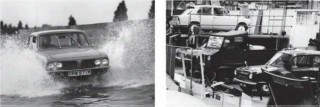
Pony 4×4 alongside 1300 prototype with bulbous lamps. Twin lights and longer boot on 1500; this a rear-drive TC.

Rot spots
1 Front valance (NLA new apart from glassfibre)
2 Front outer wings
3 Front inner wings and suspension turrets
4 Body around suspension and subframe mounts
5 ’Screen surround/scuttle
6 Floor under seat and boot
7 Inner and outer rear wings
8 Rear valance, bootlid lip, vent above rear window
9 Sills (including base of A/B posts) and floorpans
10 Door bottoms
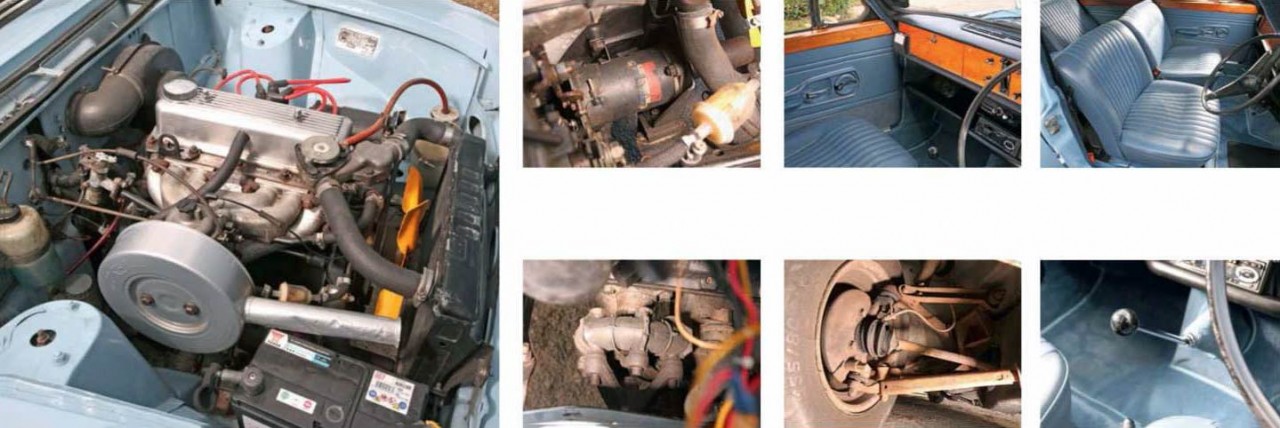
The engine should feel smooth, quiet and flexible when driving. Listen for crankshaft knock (more so on 1500) and look for excessive breathing and oil leaks. Confirm that the oil light goes out promptly on start-up and doesn’t flicker at hot idle. New valve seats will be needed after 10-20,000 miles on unleaded petrol, unless driven gently.
All models had comfortable seats plus excellent heating and ventilation; the 1300/1500 front chairs adjust in all directions and, being vinyl, are durable.
1300’s contra-rotating starter is almost unique, and operates on a separate ring gear. Replacements are hard to find, though club contacts can usually help.
Walnut door cappings and dash should match; look for damp and delamination. Fold away window winders were a novel safety feature, unique to the 1300.
Rotoflex couplings were only used on 1300s; aftermarket replacements have limited life, but originals are virtually unobtainable now. 1500 used CV joints Suspension/wheel bearing wear should show up at MoT time; soggy bushes spoil handling and ride, as do weak dampers. Front disc brakes on all but early Toledos.
The transmission should be practically inaudible; test for worn synchros and jumping out of gear. Imprecise change is bushes; baulking may be the quill shaft.
On the road
Triumph’s 1296 powerplant was exceptionally smooth and flexible; its only significant weakness was a tendency for the crank thrust bearings to wear – scarcely noticeable in service but rendering the block potentially unusable at rebuild time. Get someone to depress the clutch while watching the front crank pulley to see if it moves back and forth – any noticeable movement is too much. Stroking the unit to get 1493cc put higher loads on the three main bearings: 1500s have a limited life, but changing bearings at 50,000 miles or less will help to avoid severe crank wear.
Low gearing gave lively performance, but the penalty was high fuel thirst if driven hard. Idler gears were used to take drive down to the gearbox; engine, gearbox and diff each had their own oil but the quill shaft transferring drive on 1300s was a weak point. Canley Classics made uprated ones; 1500s are stronger but not interchangeable. If it’s difficult to select the gears, be very wary.
The wide track and long wheelbase provide safe handling, with understeer predominant. The 1300TC had 23% more power: it was the quickest of the cars reviewed here, but Motor headlined its test ‘Performance replaces refinement’ and many owners prefer the single-carb version.
Turning a long-wheelbase, front-drive car into a rear-drive model meant that the Toledo needed a centre propshaft bearing – driveline vibration probably points to wear in this. The Toledo had its own innovation – polycarbonate bumper underriders – and, despite being a deliberately cheapened model, remained refined, with good handling and remarkable economy.
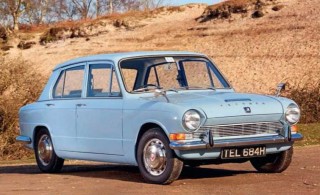
Michelotti’s classy, well-balanced lines for the 1300 look like a 2000 in miniature, but with its own distinct character. Nicely appointed Triumph saloon rides and handles well.
OWNER’S VIEW Neil Harris
“I bought this 1300 in 2011,” says Harris: “It’s our fourth. The first was my wife’s grandad’s: it was too rough to rebuild, so we broke it for parts and bought another (a TC), and another.
This was a Bournemouth car and had done only 26,000 miles. The first owner traded in a Rover 2000 automatic for it and must have thought it was an auto, because it had bills for many clutches! There was5mmend play in the crank – I had to change the engine. The body was superb, though. It was never sealed – it’s still in primer underneath – but it’s never had any welding. They were quite forward-looking for the time… and it’s unusual; it’s often the only one when we go to shows. There’s a keen following and we enjoy the club’s social side.”
The knowledge
WHAT TO PAY
Show/rebuilt £7500
Average £2000
Restoration £750
TYPICAL PRICES
Full rear wing, Toledo £248
Front subframe, 1500 £211
Brake master cylinder, recon exch ’1972-on £135
Rebuilt engine £3000
Clutch kit, 1300 FWD £260
Water pump £32
CLUB
Club Triumph https://club.triumph.org.uk
Triumph Dolomite Club www.triumphdolomite.co.uk Triumph Sports Six Club www.tssc.org.uk
BOOKS
Triumph Cars, The Complete Story Robson & Langworth, Veloce
Triumph 1300 to Dolomite Sprint Kevin Warrington, Amberley Publishing
Triumph & Standard Cars, A Pictorial History Warrington, Veloce
SPECIALISTS
Mick Dolphin 01530 271326
Rimmer Bros 01522 568000
Canley Classics 01676 541360
MEVSpares 01580 753246
James Paddock 01244 399899
ANG Classic Car Parts 07739 792535
TD Fitchett 01952 620434
Quiller Triumph 020 8854 4777
One to buy £8955
Year of manufacture 1973
Recorded mileage 13,358
Vendor CMV Automotive, Lowestoft, Suffolk; tel: 01502 341337
For Nearest thing to a new one
Against Repaint not the greatest; price
This really is a timewarp car. Put away in ’1979 due to the ill health of its first owner, this Toledo retains the registration document bearing his signature. A dog owner, he left the protective covers over the door cards, and three are still in place. It retains its handbook, Passport to Service, with PDI and the initial stamp, warranty card, and the first three MoTs plus tax discs to ’1978.
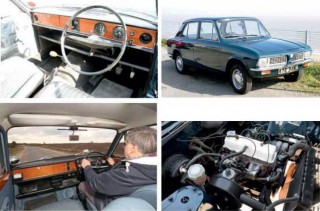
The wheeled sill joints are as per factory, while the doors fit and close perfectly. All that detracts from its originality is the respray, carried out because the paint had deteriorated after decades of storage. It’s shiny, with a hint of orange-peel in places, but it was done with the rear window in, and has a few sink and dust marks. The wheels were refinished, too, shod with five new Pirellis. Other recommissioning work included a new exhaust, battery, fuel pump and starter solenoid, and someone has been through the front suspension because it has new balljoints and locknuts.
The rear bumper’s chrome is good, but lightly speckled on the front and the doorhandles are beginning to pickle. Inside, with its perfect headlining and rear-seat vinyl, the only blemish is a small burn on the driver’s seat base. The engine starts easily and takes a while to warm, eventually reading just above the blue temperature segment. It drives very pleasantly, with a light gearchange, firm brakes and taut, new feel: quite uncanny. It’s all the money – but find another like it.
Respray looks nice but isn’t perfect; new P3000s all round. Mint cabin still has polythene covers on three of its doors. Toledo had lots of new parts during its recommissioning.
Novel front-drive Triumph is eminently usable, but they’re now hard to find.
TIMELINE
1965 Oct Front-wheel-drive 1300 launched
1966 Jan 1300 goes on sale
1967 Oct 1300TC added, 75bhp
1969 Brian Culcheth wins first time out in 4×4 1300 in Rallycross Winter Series
1970 1500 FWD replaces 1300: longer boot, twin headlights, beam rear axle, 61bhp; Toledo added: two-door, 1300, live axle, rear-wheel drive
1971 Oct 1500 up to 65bhp
1972 Oct Four-door Toledo introduced (as well as Dolomite 1850)
1973 Oct 1500TC RWD added, inc auto option, competitive pricing, 91mph, cloth seats optional
1975 Mar 2dr Toledo dropped
1976 Mar Toledo and 1500 replaced by Dolomite 1300/1500 (RWD only)
FACTFILE
Sold/number built 1965-’1976/333,885
Construction steel monocoque
Engine all-iron, overhead-valve 1296/1493cc ‘four’, single Stromberg or single/twin SU carburettors
Max power 58bhp @ 5300rpm-75bhp @ 6000rpm / DIN
Max torque 70lb ft @ 3000rpm-84lb ft @ 3000rpm / DIN
Transmission four-speed manual or three-speed auto (1500TC only), driving front/rear wheels
Suspension independent, at front by coils, double wishbones, telescopics rear all: coils, telescopics; 1300 & TC independent semi-trailing arms; others diagonal upper links & trailing lower links – 1500 dead axle & anti-roll bar, Toledo/1500TC live axle
Steering rack and pinion, 3 turns lock-lock
Brakes front 8 ¾ in (222mm) discs, servo on all but 1300 FWD and Toledo to Oct 1972 which had 9in (229mm) front drums; rear 8in (203mm) drums
Length 12ft 11in-13ft 6in (3937-4115mm)
Width 5ft 1 ¾ in (1568mm)
Height 4ft 6in (1372mm)
Wheelbase 8ft ½ in (2454mm)
Weight 1905-2128lb (866-967kg)
0-60mph 19-13.2 secs
Top speed 84-93mph
Mpg 25-40
Price new £899/940 (1300/1300TC, 1968 UK)
INSURANCE
£81.85, based on a 30-year-old London-based driver with full no-claims bonus and a clean licence on a 1968 Triumph 1300TC as a second car, agreed value £5000, garaged overnight, 5000 limited mileage. Richardson Hosken: 01277 206911.
THE ALTERNATIVES
FIAT 124
Lively front-engine (1197/1438cc), rear-drive workhorses that rusted in their millions. All-disc brakes, plus later twin-cams. Few left, but good to own and fun to drive if you find a nice one.
Sold/no built 1966-’1974/c1,543,000
Mpg 25-35
0-60mph 15.9-10.1 secs
Top speed 83-102mph
Price new £820 (1968 UK)
Price now £1500-5000 (2018 UK)
MG 1100/1300
The sportiest ADO16s sold well in MG form. Brilliant packaging and superb Hydrolastic suspension, though all became expensive when rot set in. Strong following now, with prices rising.
Sold/no built 1962-’1973/189,958
Mpg 26-36
0-60mph 18.4-14.1 secs
Top speed 85-97mph
Price new £845 (1968 UK)
Price now £3000-7000 (2018 UK)
Our verdict
The small Triumph saloons had an unconventional gestation but led into the successful Dolomite range. Some low-mileage, well-preserved examples are still around and worth grabbing, because values haven’t yet increased much and they are refined, comfortable and very usable. Values don’t justify restoration so avoid unless you’re an expert at DiY.
FOR +
- Comfortable and refined
- Practical, compact classic
- Excellent heating and ventilation
- Still fine value for money
AGAINST –
- Undergeared, especially 1300
- Some parts getting hard to find
- Lacks quirkiness and DiY maintenance appeal of separate-chassis Triumphs





